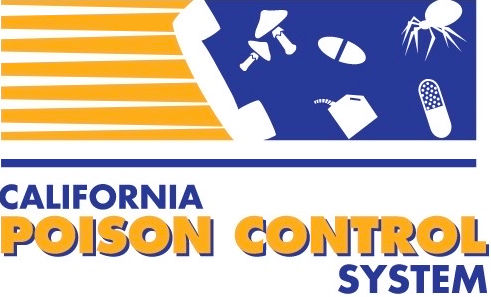Updated April, 2023 by Justin Seltzer, MD
Original author Jean Lo, MD
Introduction
Neurologic symptoms following consumption of seafood are uncommon but well described, with tens of thousands of cases annually worldwide and likely many more that are unreported and/or misdiagnosed. Neurotoxic seafood poisoning most often occurs following consumption of fish and shellfish. However, seafood consumption distant from where the animal was initially caught may complicate identification of the culprit organism. Further, diagnosis can be difficult, especially given limited provider familiarity with clinical syndromes.
Case 1 presentation
A 30 year old male was brought to the emergency department 6 hours after eating sea bass. His symptoms included perioral numbness and tingling, a strange metallic taste, and reversal of temperature discrimination. He was also mildly hypotensive and bradycardic.
Questions
- What is the likely causative agent?
- Where are the likely sources?
- What is the physiologic mechanism by which the agent exerts its effects?
Case 2 presentation
A 25 year old female was brought to the emergency department 24 hours after eating specially prepared fish at a Japanese restaurant. Shortly after ingestion, she developed lip and tongue paresthesias. Four hours after ingestion, she became nauseated, vomited, and had abdominal pain. She presented with decreased strength in both of her legs.
Questions
- What is the likely causative agent?
- What are the likely sources?
- What is the physiologic mechanism by which the agent exerts its effects?
Ciguatera poisoning
Ciguatera poisoning is the most common domestic vertebrate fishborne poisoning. It is associated with warm-water, bottom-dwelling shore reef fish from subtropical and tropical areas, including barracuda, sea bass, parrot fish, red snapper, grouper, amber jack, sturgeon, and kingfish. In the United States, Hawaii and Florida together account for approximately 90% of all domestic cases. However, cases have been reported in areas distant from the subtropical and tropical regions due to fish importation.
The etiology is thought to be due to toxins produced by photosynthetic dinoflagellates, namely Gambierdiscus toxicus, that contaminate the fish and cause clinical ciguatera toxicity when consumed by humans. No specific causative toxin has been identified and it is thought that clinical ciguatera toxicity may be due to several toxins. Ciguatoxin is the best characterized. Ciguatoxin binds to voltage-sensitive sodium channels in diverse tissues and increases the sodium permeability of the channel. These toxins are heat, cold, and acid stable and have no taste, smell, or color; no known method of preparation can eliminate the possibility of ciguatera.
Symptoms usually begin 2 to 6 hours after ingestion but can be significantly delayed by a day or longer. The clinical syndrome can produce a wide range of symptoms. Classically, ciguatera is associated with prodromal nausea, vomiting, and diarrhea followed by development of headaches, myalgias, paresthesias, numbness and tingling of the tongue, lips, throat, and perioral area, ataxia, vertigo, and hallucinations. Autonomic instability (hypo/hypertension, brady/tachycardia) can also occur and is usually rapid in onset. Some more peculiar neurologic findings associated with ciguatera include hot-cold reversal, cold allodynia, metallic taste, and a sensation of loose and/or painful teeth. Life threatening symptoms, such as dysrhythmias and seizures, have been reported but are rare. Most ciguatera symptoms resolve within a few days, though the neurotoxic effects can persist for weeks to months, or longer.
While ciguatera is not considered communicable between people under normal circumstances, transmission has been reported. Classically, sexual contact with an affected male can cause dyspareunia and other symptoms in a previously unaffected woman. There are scattered reports of babies becoming symptomatic after nursing from symptomatic mothers. Babies born to mothers with active ciguatera have also been reported to have been born with focal neurologic abnormalities that resolved within weeks, suggesting the possibility that ciguatera toxins can cross the placenta.
Management of acute ciguatera poisoning is mainly supportive with antiemetics, intravenous fluids, and chronotropic, circulatory support as needed. The neurologic abnormalities are difficult to treat and can be chronic. Some recommended treatments include gabapentin, pregabalin, amitriptyline and intravenous mannitol. Mannitol should only be used if the patient is appropriately volume resuscitated first to avoid further volume losses. Breastfeeding mothers should not breastfeed while actively symptomatic. A minority of patients may develop chronic neurologic and/or psychiatric manifestations, such as chronic fatigue.
One episode of ciguatera can cause sensitivity to ciguatera in the future, making it important to avoid reef fish for at least 6 months after the illness. Recurrent episodes are often more severe than the initial episode. Sensitivity, with recurrence of similar symptoms, has also been documented with consumption of alcohol, caffeine, and meats including other, unrelated fish as well as with exercise for months to years after.
Neurotoxic shellfish poisoning
Neurotoxic shellfish poisoning is a specific syndrome caused by ingestion of shellfish contaminated by brevetoxin. Common shellfish culprits include oysters, clams, mussels, and scallops.
Brevetoxin is released by the dinoflagellate Karenia brevis. Karenia brevis is best known for its role in toxic “red tides” along the Gulf coast. Although associated with the southwest Florida coast, brevetoxin has been reported throughout the entire US and Mexico Gulf coasts and the Atlantic coast north to North Carolina.
Brevetoxin binds to voltage-gated sodium channels and stimulates sodium flux through these channels. The resulting neurologic manifestations include paresthesias (classically starting circumoral then descending into the extremities), vertigo, ataxia, hyporeflexia, reversal of hot and cold temperature sensation, and seizures. Increased sodium influx also causes release of acetylcholine from postganglionic parasympathetic nerve endings, resulting in bronchospasm and bradycardia. Gastrointestinal symptoms, such as nausea, vomiting, diarrhea, and rectal burning can also occur and can appear simultaneously with the other symptoms. Symptom onset ranges between 15 minutes to 18 hours.
Management of neurotoxic shellfish poisoning is mainly supportive. Respiratory symptoms can usually be managed with beta agonists such as albuterol and antimuscarinic bronchodilators.
Paralytic shellfish poisoning
Paralytic shellfish poisoning occurs following ingestion of saxitoxin contaminated shellfish, mainly bivalve mollusks (e.g, clams, oysters, mussels, and scallops). Poisoning has also occurred through consumption of other aquatic animals, such as sand crabs, reef crabs, and purple starfish. Saxitoxin-contaminated shellfish generally originate from the Pacific Northwest and Northeast Atlantic coast. The common season for this poisoning is between May and November.
Saxitoxins compounds are a large group of related toxins produced by a variety of dinoflagellates. Saxitoxin is the best characterized of the toxins. The other saxitoxins compounds are structurally derived from saxitoxin, varying by different R groups.
Saxitoxin acts through blockade of the voltage-sensitive sodium channels, thus blocking propagation of nerve and skeletal muscle action potentials. Symptoms usually occur within 30 minutes of ingestion. Neurologic symptoms predominate and include paresthesias, headache, ataxia, cranial nerve dysfunction, muscle weakness and paralysis. Gastrointestinal symptoms such as nausea, vomiting, diarrhea, and abdominal pain can occur but are less common.
Mortality is reported to be 2.6 to 23.2% in a series of paralytic shellfish poisoning and is most often secondary to respiratory failure. Toxicity peaks at around 12 hours after symptom onset, and the prognosis is good if the patient survives the first 12 hours. However, muscle weakness may persist for weeks. Management is supportive care with early intervention for neuromuscular weakness and respiratory failure
Tetrodotoxin
Tetrodotoxin is a neurotoxin famously present in the Japanese puffer fish (fugu) and blue-ring octopus. Other sources include puffer-like fish (e.g. globe fish, balloon fish, blowfish, and toad fish), gastropod mollusks (e.g. lined moon shell, frog shell), horseshoe crab eggs, and some starfish, flatworms, and newt species.
Fugu is considered a seafood delicacy in Japan, with the tetrodotoxin effects considered an important element. The flavor of fugu is considered to be at its best from November to February, which are the months when the toxin content of the ovaries and liver in these fish increases. Tetrodotoxin-containing puffer fish is still served by certified chefs and coveted for its mild neurotoxic properties when eaten. Fugu imported to the United States is required to be tetrodotoxin-free via a complex certification process.
Tetrodotoxin is one of the most lethal toxins known and acts via inhibition of sodium channels and blocking propagation of nerve and skeletal muscle action potentials. It is heat stable.
Symptoms usually occur within minutes of ingestion and initially include headache, diaphoresis, and dysesthesias and paresthesias of the lips, tongue, mouth, face, fingers, and toes. Neuromuscular dysfunction manifesting as dysphagia, dysarthria, loss of coordination, fasciculations, and ascending paralysis with neuromuscular respiratory weakness with preserved consciousness can develop in a delayed fashion, usually 4 to 24 hours after ingestion. Hemodynamic instability can occur as well.
Management is supportive care with early airway protection and hemodynamic support as needed. Mortality in some series has been reported up to 50%. However, with aggressive supportive care including early ventilatory and hemodynamic support, the prognosis is better.
Amnesic shellfish poisoning
Amnesic shellfish poisoning is caused by domoic acid, a structural analog of glutamic and kainic acids. Domoic acid is produced by certain phytoplankton found along the Pacific Coast of North America, eastern Canadian Atlantic coast, and Gulf of Mexico, which are thought to be responsible for several historic outbreaks in these areas. Organisms that feed on domoic acid producing phytoplankton, such as shellfish, sardines, and anchovies, then become contaminated with domoic acid and cause toxicity when consumed. Domoic acid is heat stable.
Domoic acid causes excitatory neurotoxicity, leading to neuronal loss primarily within the thalamus, forebrain, and hippocampus. Hippocampal involvement is what is thought to mediate the memory loss and disorientation.
Symptoms usually begin within minutes but can take more than a day to develop after ingestion of contaminated shellfish. Gastrointestinal symptoms, such as nausea, vomiting, and diarrhea, typically precede neurological symptoms, and most often occur within 24 hours, while neurological symptoms usually occur after 48 hours. Neurological symptoms include memory loss, disorientation, ophthalmoplegia, hyporeflexia, skeletal muscle weakness, abnormal movements such as purposeless chewing and grimacing, seizures, and depressed level of consciousness. Cardiac dysrhythmias and hemodynamic instability can develop.
Management is largely supportive, with benzodiazepines for seizures if needed.
Mortality is low and usually occurs in older patients. However, affected patients are at risk for long-term anterograde memory deficits and motor and sensory neuropathy following resolution of the acute toxicity.
Palytoxins
Palytoxins are among one of the most dangerous marine toxins known. Palytoxins have been associated with some severe cases of ciguatera and is the toxin thought to cause a clinical syndrome known as “clupeotoxism” following consumption of Clupeidae such as sardines, herrings, and anchovies. It is mostly seen in subtropical and subtropical regions and can contaminate and bioaccumulate in any organism that lives in proximity to or feeds on palytoxin producing corals or dinoflagellates. Consumption of these contaminated organisms leads to human toxicity. Palytoxin exposure can also occur from handling of Palythoa corals, aerosolized toxins emanating from dinoflagellate blooms, and from cleaning aquarium tanks containing these organisms. Palytoxin is heat stable.
Palytoxin, the best described of the group of palytoxins, is thought to cause toxicity by a unique effect on the sodium-potassium ATPase in which the transporter is stuck in the open conformation, allowing sodium and potassium to passively diffuse across the cell membranes via the open transporter; effectively, palytoxin turns the sodium-potassium ATPase from an active transporter to an open ion channel. This destroys the ion gradient necessary for cellular sodium and potassium homeostasis. Ultimately, this leads to widespread cellular dysfunction and damage.
Signs and symptoms of palytoxin poisoning are not well defined due to the rarity of exposure and diversity of exposure types and routes. Toxicity from ingestion has been noted to cause nausea, vomiting, diarrhea, abdominal pain, and metallic taste rapidly followed by development of severe headache, anxiety, myalgias, dyspnea, vertigo, paresthesias, muscular weakness, seizures, and depressed level of consciousness leading to coma. Signs of shock, such as tachycardia, hypotension, and cool skin and extremities, have also been reported. Death can occur rapidly, reportedly within minutes. Those not experiencing rapid onset life threatening symptoms have shown evidence of widespread cellular damage, manifesting clinically as hemolysis and rhabdomyolysis. Similar marine syndromes primarily resulting in rhabdomyolysis, such as Haff disease, are thought to be related to palytoxin or palytoxin-like exposure as well, though no conclusive evidence of this has yet been shown.
Toxicity from other exposure routes, such as aerosol or skin/mucus membrane exposure, are even more poorly defined. Aerosols are thought to cause local irritant symptoms such as cough, dyspnea, wheezing, fever, and conjunctivitis. Skin exposure can result in local edema and erythema along with milder systemic symptoms such as perioral paresthesias and myalgias; ocular exposure can cause pain, conjunctival injection, and vision impairment with reports of resulting severe corneal injury. Significant exposures may be associated with long term neurologic symptoms and neurocognitive impairment. Management is supportive.
Case 1
Question Answers
- What is the likely causative agent? Ciguatoxin. The ingestion of sea bass, reversal of temperature discrimination, hypotension and bradycardia are predominant clues.
- Where are the likely sources? Ciguatoxin originates from photosynthetic dinoflagellates like Gambierdiscus toxicus, and bacteria within the dinoflagellates. Dinoflagellates are the main food source for small fish, leading eventually to bioconcentration into larger predator fish such as barracuda, sea bass, parrot fish, red snapper, grouper, amber jack, sturgeon, and kingfish. Ciguatoxin can be found in higher concentrations in the flesh, adipose tissue, and viscera of these larger fish.
- What is the physiologic mechanism by which ciguatoxin exerts its effects? Ciguatoxin binds to voltage-sensitive sodium channels in diverse tissues and increases the sodium permeability of the channel.
Case 2
Question Answers
- What is the likely causative agent? Tetrodotoxin. The lip and tongue paresthesias, subsequent gastrointestinal symptoms, and finally ascending paralysis are characteristic.
- Where are the likely sources? Tetrodotoxin is found in fugu, a Japanese puffer fish consumed as a delicacy in Japan. Tetrodotoxin can also be found in puffer-like fish, gastropod mollusks, the blue-ring octopus, horseshoe crab eggs, starfish, flatworms, and some newts.
- What is the physiologic mechanism by which tetrodotoxin exerts its effects? Tetrodotoxin acts via inhibition of sodium channels and blocking propagation of nerve and skeletal muscle action potentials.



